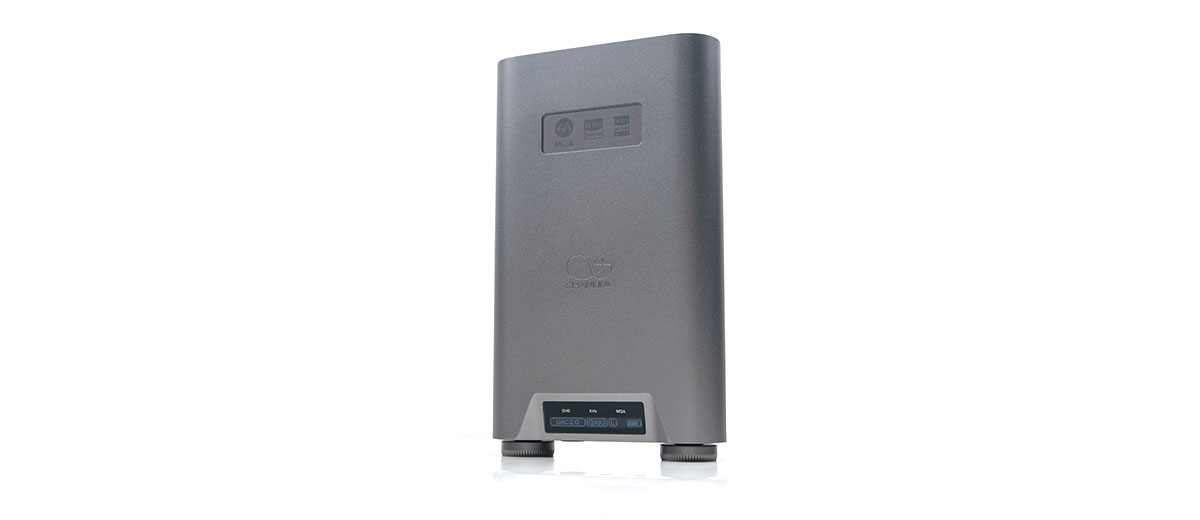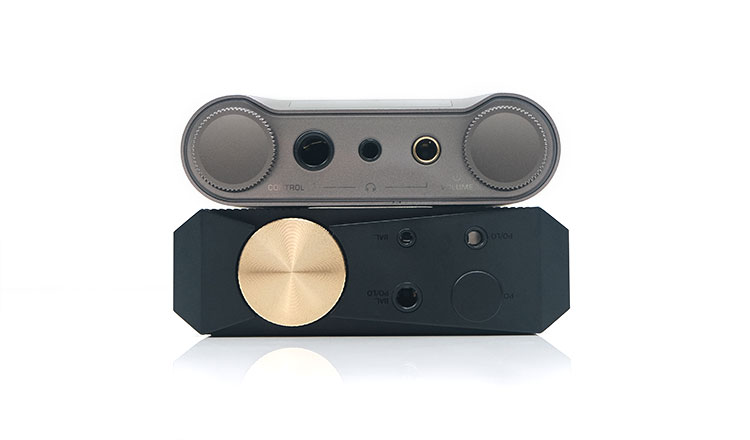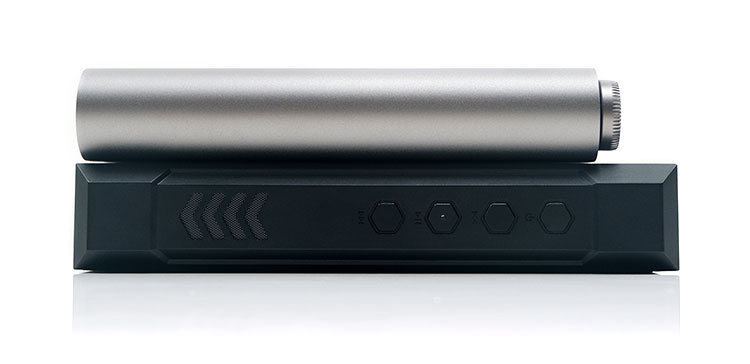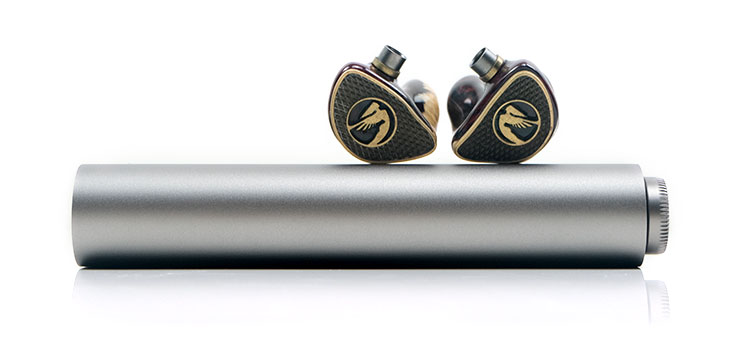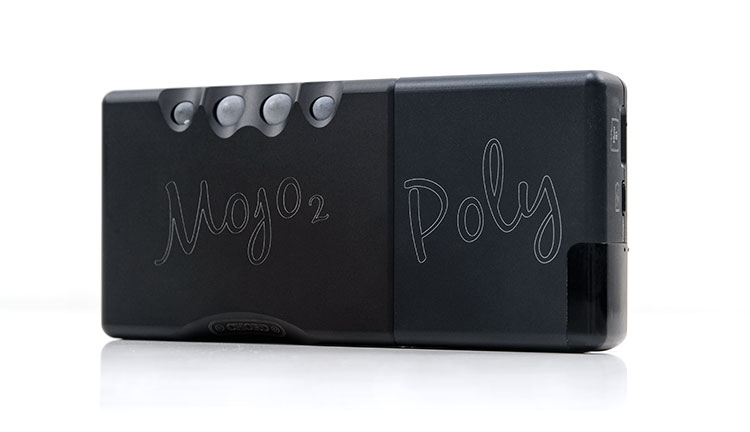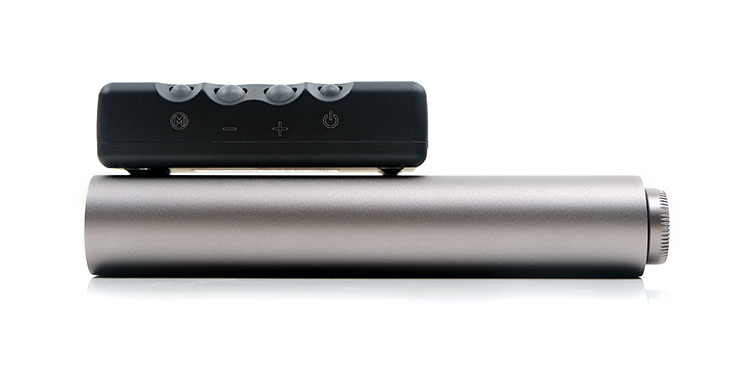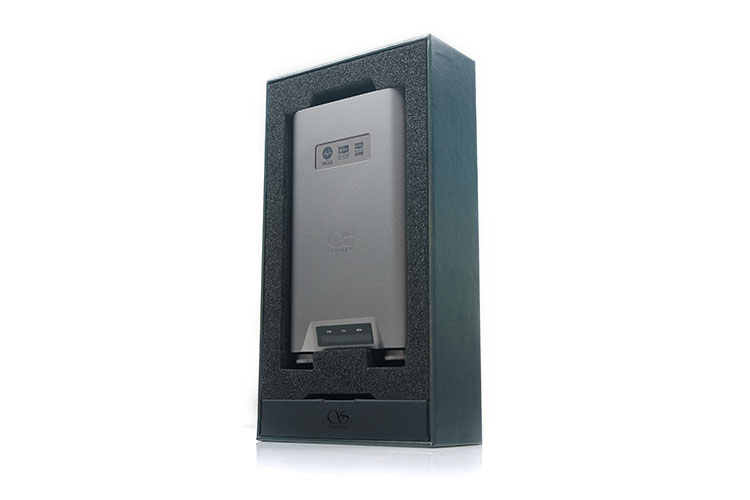Select Comparisons
All selected comparisons were completed using a wired OTG link with a Samsung Z Flip 3 and an Apple iPhone Mini 13. IEM pairings included a Noble Audio Viking Ragnar, JH Audio Jolene, and Empire Ear’s Odin. Headphones used include the Audeze MM-500.
FiiO Q7
$799
The FiiO Q7 was our co-awardee portable amp/DAC combo of 2022 and the clear head-to-head competitor to the Shanling H7 with its similar pricing point. You can read our full review of the Q7 here.
Decoding
Both of these devices follow a similar road map from their flagship DAPs with a switch to a single DAC chipset from a dual. The consistency is the difference as Shanling sticks with AKM and their latest flagship AK4499EX chipset and FiiO with the ES9038PRO.
Both the H7 and the Q7 share the same XMOS XU316 USB chipset so decoding seems very similar with a maximum of DSD512 and PCM 32BIT/768kHz, (via the USB-DAC output), as well as SPDIF with coaxial and optical up to 192kHz/24BIT for coaxial and 96kHz/24BIT.
Both devices will unfold MQA tracks up to a maximum of 8X with the H7 also able to switch between UAC 1.0 and USA 2.0 which gives it some additional compatibility with older PCs.
The choice of BT chipset also differs with the Q7 using a QCC5124 chipset and the H7 using Ampak AP6256AC, both of which are BT5.0 capable.
The key difference is in the wireless codec choices with the Q7 going from SBC/AAC through to aptX and up to LDAC. That includes aptX LL and Adaptive.
The H7 also offers LDAC, SBC, and AAC. However, there is no aptX support and I suspect it’s a licensing issue combined with not using a Qualcomm chipset that owns the aptX codec. You will find that a lot these days, particularly in big Chinese mobile brands such as Huawei.
Amplification
For the Q7 FiiO has basically duplicated the dual THX AAA 788+ amplifier setup found inside the M17 whereas Shanling has gone a slightly different path from their DAPs with the use of a Texas Instruments TPA6120A2 amplifier though the accompanying OPA2211 low pass filter is plucked from their M7 DAP.
On a pure battery mode level, both have a similar maximum output capacity with the Q7 at 1.5W balanced into a 32Ω load and the H7 just lightly behind at 1.3W into the same load. Single-ended is similarly competitive at 550mW, (Q7) on a 32Ω load compared to 450mW from the H7 on the same load.
Of course, the ace up the Q7’s sleeve is the DC mode which will give it a massive lift to 3W into 32Ω balanced and 1.5W unbalanced into the same load. That does mean the Q7 is no longer a portable device but the flexibility is there for much more power for home or desktop use without any battery drain.
Software
Both portable devices have a fairly light and speedy CPU core combined with a GUI LED panel that can help with controlling the functionality of each device. I would say the Q7’s bigger colored panel display is far superior in terms of understanding it and how to use it compared to the linear black-and-white line display of the H7 panel.
However, the H7’s additional playback control from its onboard memory slot gives it a key unique feature. Combine that with the Eddict app and the ability to SyncLink and for me, the H7 has a clear competitive advantage here as both a portable Amp/DAC and an audio source, something that is missing from the Q7.
I actually found their controller apps to be reasonably similar aesthetically but coming in and out of the FiiO Controller app felt somewhat slower to wake up and the H7 app does seem to have more features once paired such as the UAC switch mode, digital filter controls, screen orientation and even locking the H7.
The Q7 does offer an EQ feature and the ability to individually select your desired BT codec which I find quite useful and lacking in the Eddict app but SyncLink and local playback from the H7’s memory card feature trumps all that for me.
Design
No question the H7 is the more portable of the two devices offering a sleeker curvier and much lighter handling experience compared to the Q7. We are talking 650g versus 352g and you will notice a difference right away in the handling.
Of course, the Q7’s bigger size seems to have a few advantages such as a more legible LCD panel and a more protected single multifunction volume potentiometer.
The Q7 also has a wider range of built-in I/O options such as the additional 2.5mm TRRS PO on the front panel and the DC mode socket to the rear. Both match for 6.35mm, 3.5mm, and 4.4mm PO options on the front panel.
Coaxial and optical are also split on the Q7 with proper connection types rather than the H7’s combined SPDIF 3.5mm output and it also offers 3.5mm and 4.4mm LO on the front panel. The H7 lacks a balanced line out but that dual RCA line out and preamp capability will appeal to a lot of people with classic HiFi setups.
Charging and USB-DAC/OTG are split on the H7 as opposed to a single USB-C slot on the Q7. That means you do need to charge the Q7 via its DC input if you want to use it as a USB DAC which is not required by the H7.
Despite having a smaller battery, the performance of the H7 is not too far off the Q7 at 10 hours SE and 8 hours balanced compared to the Q7’s 11 hours and 9 hours. With DC mode you can elect to save on battery by turning it off on the Q7 when powered from the mains which is helpful.
IEMs Performance
I will kick off by saying on a technical level the Q7 offers a bit more dynamic range and energy with a snapper and better-defined low-end. Whereas the H7 has a smoother-sounding timbre, more euphony in its coloration, with a natural-sounding treble performance.
Staging and imaging are more neutral for me with the H7 with perhaps a slightly stronger midrange or vocal presence. Whereas the Q7 sounds more stretched and slightly further forward on the lows and upper mids/treble of the Q7.
How that works for you will come down to the pairing side of things. For example, on the IEM pairing side, I tried the Viking Ragnar and the Jolene in that order with contrasting impressions.
With the more revealing Ragnar, I felt most owners would opt for the H7 pairing given the way it smooths out those energetic EST and upper mid-/highs BA tweeters. It’s a very coherent and more natural-sounding presentation compared to the Q7.
The Q7 tended to overcook the Ragnar upper mids and treble giving it a much harder less forgiving harmonic balance on the highs. That tended to jar and grate too much when percussion passages went up a notch sounding more digital to my ear.
However, switching to the darker-sounding Jolene I felt more drawn to the precise, slightly drier, and cleaner Q7 simply because it works a bit more magic in teasing out the relaxed mids and highs whilst at the same time creating a more defined and better layered low-end response.
Here the H7 sounded a little softer and more laid back with the Jolene bass boost adjusted to the recommended 2 pm setting. If you keep the bass boost off then the Jolene sounds more neutral and that favors the natural hue of the H7 presentation.
Headphones Performance
Both the H7 and the Q7 can drive the 18Ω/100db @1kHz SPL rated MM-500 quite easily in balanced mode but the pattern was relatively unchanged in terms of timbre versus dynamics.
Again, the Q7 felt it had a slight edge in power with the better dynamic range and snap on the MM-500 low-end, even in battery mode, much more so in DC mode. It definitely sounded deeper and better defined on the sub-bass delivery.
However, the H7/MM-500 mids were smoother and more natural sounding to my ear. You get a little more euphony again, but also a bit more richness in the tonal quality of the MM-500/H7 pairing with less treble overtone bearing down on it. It made for a very sweet combo, especially for male falsetto and higher-pitching female vocal performances.
The Q7 wasn’t as difficult a pairing as the Viking Ragnar with the MM-500 upper-mids and treble tuning though the more forward nature in its imaging over this region might tease out a bit more sibilance as well as relegate some higher pitching instrumental imaging further behind the lead vocal.
The H7 is not quite as forward on the upper mids of the MM-500 with an overriding perception of a bit more space between you and the performer, improving on staging width and instrumental presence along with it.
Chord Electronics Mojo 2 (with Poly)
£449 & £499.00
The Chord Electronics Mojo 2 was launched at the start of 2022 and was our co-awardee portable DAC/amp Top Gear Award winner for 2022 alongside the Q7. The Poly is an additional purchase with wireless and local playback capability. You can read our reviews of the Mojo 2 here and the Poly here.
Decoding
Chord takes a very different approach to the internals of the Mojo 2 compared to the H7.
This is an in-house designed FPGA-driven DAC implementation with no off-the-shelf delta-sigma or R-2R design. Whereas the H7 is delta-sigma and uses the latest flagship AK4499EX in a single chipset implementation.
Chord has kept the Mojo 2 at the old Mojo decoding levels of PCM 32BIT/768kHz and DSD256 natively. There is no MQA decoding capability nor is there a wireless BT receiving or transmission capability.
Compared to the H7’s DSD512, PCM 32BIT/768kHz, MQA 8X and BT LDAC capability the Mojo might seem a bit more limited. That is until you add the Poly to the Mojo which then gives you a leg up to a superior lossless WiFi mode. That means AirPlay, Roon, and DLNA as well as local playback via a microSD slot through WiFi are all possible.
The Poly will also wire up the Mojo 2 for Bluetooth but it’s an older 4.2 format and only up to aptX. It’s a good feature for when you have no WiFi capability and for initial setup but not a patch on the H7’s LDAC and SyncLink capability.
Amplification
Chord uses a Class A amplification topology with a dual 3.5mm SE output inside the Mojo 2 whereas the H7 uses a Class AB amplification.
It is, however, a single-ended topology but consistent with Chord’s entire amplification lineup. You will not see a balanced output save for pre-amping XLR output to power amps on the likes of the Hugo TT2.
The Mojo 2 also lacks a preamp function similar to the dual RCA from the H7 though if you want a single LO function then both operate in the same manner with roughly 2V output at full volume via the 3.5mm jack.
The Mojo 2 power is superior for SE at 600mW into a 32Ω load compared to 450mW from the H7. However, the H7 really comes into its own for its balanced output at 1.3W into the same load and can also handle a wider range of PO outputs with 6.35m and 4.4mm included.
Software
Software is only applicable if you are using the Mojo 2 with the Poly and its Go Figure app whereas the integrated design of the H7 means you can use Shanling’s Eddict app right away.
As most Chord Poly owners will tell you, the evolution of Go Figure has been a fairly painful affair. Though I would class it as fairly mature now and easy enough to set up, it still has a messy feel about it compared to the Shanling Eddict app.
Both apps do rely on BT to do the initial setup but since the Poly operates primarily on WiFi then BT becomes redundant post-setup whereas the H7/Eddict app pairing is 100% BT driven.
The main way to look at the Go Figure app is like a backend admin tool because once it is set up you can then revert to any 3rd party app that uses DLNA or Apple’s airplay and it should find the Poly/Mojo 2 combo if using the same network.
The Eddict/H7 relationship is much more insular since it is primarily BT so you are more limited to settings management but you can also use SyncLink to manage your stored media and playback. If you go the regular BT pairing route outside of Eddict then any 3rd party media software will transmit to the H7 for playback.
The key difference here is lossless and lossy playback ability and therein is the Poly advantage. Even if the Go Figure app is a frustrating experience once you are connected the quality of wireless playback will be superior so long as your modem can handle it.
Design
The Mojo 2 alone is by far the smaller and more pocketable device. However, once you add the Poly it becomes almost as long as the H7 and has a reasonably similar weight in the hand. It’s still a fair bit narrower though than the Shanling unit.
The Mojo 2 I/O varies depending on whether you use the Poly or not. It does not have a USB-C port for OTG capability so it’s on par with the H7. However, it still has 2 micro USB slots for charging and compatibility with Poly.
The H7 keeps it clean and fresh with 2 USB-C slots, one for data and one for charging. I do have to mention charging at this point because both really do prefer 5V/2A connections rather than USB-C to USB-C quick chargers.
The rest of the Mojo 2 I/O includes a 3.5mm coaxial and regular optical port input. The H7 matches that but also adds that dual RCA variable volume preamp output which gives it a bit more versatility.
Now all that I/O of the Mojo 2 is gone when you add the Poly as in they are covered and not useable. You are left with a micro-USB slot for charging and the additional microSD slot for local track storage much like the H7 equivalent.
You have no choice really but to go wireless whereas the H7 gives you all I/O choices and you just pick the mode via the GUI.
The built-in Ultra High Definition DSP on the Mojo 2 is fantastic and puts the H7 digital filters to shame. It’s incredibly useful for shaping the sound signature. It’s just a little hard on the learning curve due to the Chord orb-based interface which is challenging to remember compared to the text-based H7 LED panel.
Performance
My initial OTG comparison was single-ended since the Mojo 2 only has SE outputs. However, the higher output power of the Mojo 2 SE was apparent with a stronger dynamic range, a cleaner tone, and improved bass layering.
Switching to the H7’s balanced output evened up the contest a bit more though the timbral differences and where their frequency response bias focused on in all 3 monitors were still quite distinct.
Overall, the Mojo 2 is the more neutral but the more dynamic sounding of the two with the H7 smoother and more euphonic through the mids and highs. The H7 does offer a bit more bass bloom the lows compared to the Mojo 2 which has a better punch to its bass and a little more urgency in the delivery.
The mids of the Mojo pushed the tested monitor’s imaging a bit closer but also at the same time offered a bit more intricate imaging. The H7 tended to sound more relaxed in its presentation, slightly grander in scale with a fuller low-end sound but with a degree of comparative softness in its background instrumental placement.
The Mojo 2 upper mids and treble are cleaner sounding but with the Ragnar and the Odin, it was slightly less forgiving or should I say more revealing. I would switch to the H7 if I want a shade less vocal forwardness from the Odin and a smoother EST delivery from the Ragnar.
For the Jolene, the Mojo 2’s vivid midrange is more suitable, especially if you are lumbered with a stock JH Audio SE cable. It also seems to suit the bass boost in terms of punch though if you want more sub-bass fullness the H7 will give that with a balanced cable.
Our Verdict
The Shanling H7 is yet another excellent modern interpretation of the classic DAC/amp, a niche that has had a bit of a rebirth in recent years.
Importantly, it sounds and looks very different from some of its closest rivals. You could argue it’s a neutral sound signature but compared to the likes of the Mojo 2 and the Q7 it’s a bit smoother and sweeter-toned and will gel beautifully with clean-sounding headgear.
It is also perhaps one of the most complete in terms of useful features with a wide range of I/O, LDAC BT, and that local playback feature which is a deal maker for me personally.
If some of the higher-end DAPs are out of your budget then the cheaper Shanling H7 makes a clever and at times compelling argument not to bother saving in order to get one.
Shanling H7 Technical Specifications
- DAC:AKM AK4499EX With AKM AK4191EQ
- Audio Circuit: TPA6120A2 / OPA2211 / MUSES8920
- USB Input: XMOS XU316
- Platform: Ingenic X2000
- Output Connectors: 6.35/4.4/3.5mm & RCA
- Dimensions:142 x 85 x 25 mm
- Weight: 352.5 g
- Screen:1.44-inch Screen
- System: Open Android 10
- Audio formats: DSD(“.iso”,”.dsf”,”.dff”) / ISO / DXD / APE / FLAC / WAV / AIFF / AlF / DTS / MP3 / WMA / AAC / OGG / ALAC / MP2 / M4A / AC3 / M3U / M3U8/ OPUS
- Hi-Res Support:32 bit / 768 kHz, DSD 512, MQA 8x
- Gain Setting: Three-Level Setting
- Storage: MicroSD Card Slot, up to 2TB
- Digital Filters:6 Preset Filters
- Battery: 2x 18650
- Battery Capacity: 6800 mAh
- Battery Life: Up to 10h SE / 8H BAL
- Bluetooth 5.0 Receiver
- Bluetooth Codec Support: LDAC / AAC / SBC
RCA Output
- Output Level: 2.4 Vrms
- Frequency Response: 20Hz – 40kHz (-0.2dB)
- THD+N: 0.0006%
- Dynamic Range: 121dB
- Signal-to-noise: 121dB
- Output impedance: 47KΩ
Single-Ended Output
- Output Power
- Low Gain: 28mW @32 Ohm
- Medium Gain: 112mW @32 Ohm
- High gain: 450mW @32 Ohm
- Frequency Response:20 Hz – 40 KHz (-0.2 dB)
- THD+N:0.0009%
- Channel separation:75 dB @ 32 Ohm
- Dynamic Range:121 dB
- Signal-To-Noise:121 dB
- Noise:>113 dB(<1.5 uV)(Low Gain)
- Output Impedance:<1 Ohm
Balanced Output
- Output Power
- Low Gain: 87mW @32 Ohm
- Medium Gain: 348mW @32 Ohm
- High gain: 1300mW @32 Ohm
- Frequency Response:20 Hz – 40 KHz (-0.2 dB)
- THD+N:0.0007%
- Channel separation:115 dB @ 32 Ohm
- Dynamic Range:123 dB
- Signal-To-Noise:123 dB
- Noise:>111 dB(<1.5 uV)(Low Gain)
- Output Impedance:<1 Ohm




